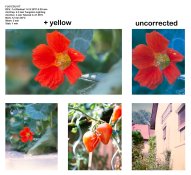Photo Engineer
Subscriber
The C41 developer when used in a reversal process does go to completion, ie. when all of the silver is used up, but this forms too much dye and at the wrong levels in the 3 layers. Thus you get crossover and blocked up shadows.
The Citrazinic Acid does form a dye which is greenish in hue, but the dye washes out, and is therefore called "colorless".
IDK if there are any good texts on this subject. I learned it all at our internal "school" at EK. We had our own "textbook" compiled by experts in each area, and we had lab sessions to run experiments to do this kind of work in preparation for the design of products.
The only cross processes that I know that yield reasonable results are E6 in C41 to make a negative, and Endura in a reversal RA process. I got my best results with EPP in the former, and iffy results with many E6 films. Results with Fuji CA paper in a reversal process have been reported by others to be iffy as well.
PE
The Citrazinic Acid does form a dye which is greenish in hue, but the dye washes out, and is therefore called "colorless".
IDK if there are any good texts on this subject. I learned it all at our internal "school" at EK. We had our own "textbook" compiled by experts in each area, and we had lab sessions to run experiments to do this kind of work in preparation for the design of products.
The only cross processes that I know that yield reasonable results are E6 in C41 to make a negative, and Endura in a reversal RA process. I got my best results with EPP in the former, and iffy results with many E6 films. Results with Fuji CA paper in a reversal process have been reported by others to be iffy as well.
PE









